site search
online catalog
PRESENTATION INSCRIBED FOOT OFFICER’S SWORD AND SCABBARD OF LIEUTENANT AND CAPTAIN EDWARD EVERETT CLAPP, 155th PENNSYLVANIA: WIA FREDERICKSBURG, COMMANDED CO. F AT GETTYSBURG; KIA SPOTTSYLVANIA

Hover to zoom


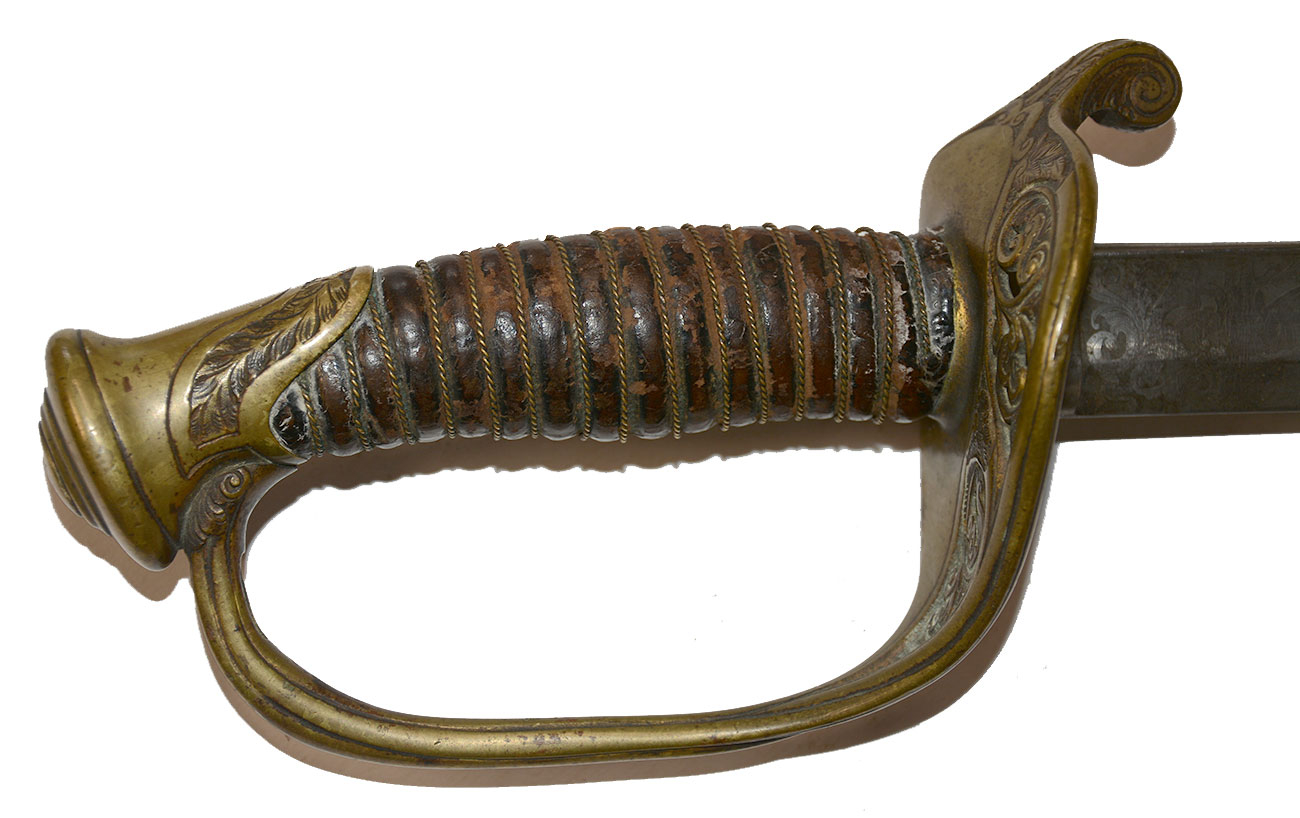

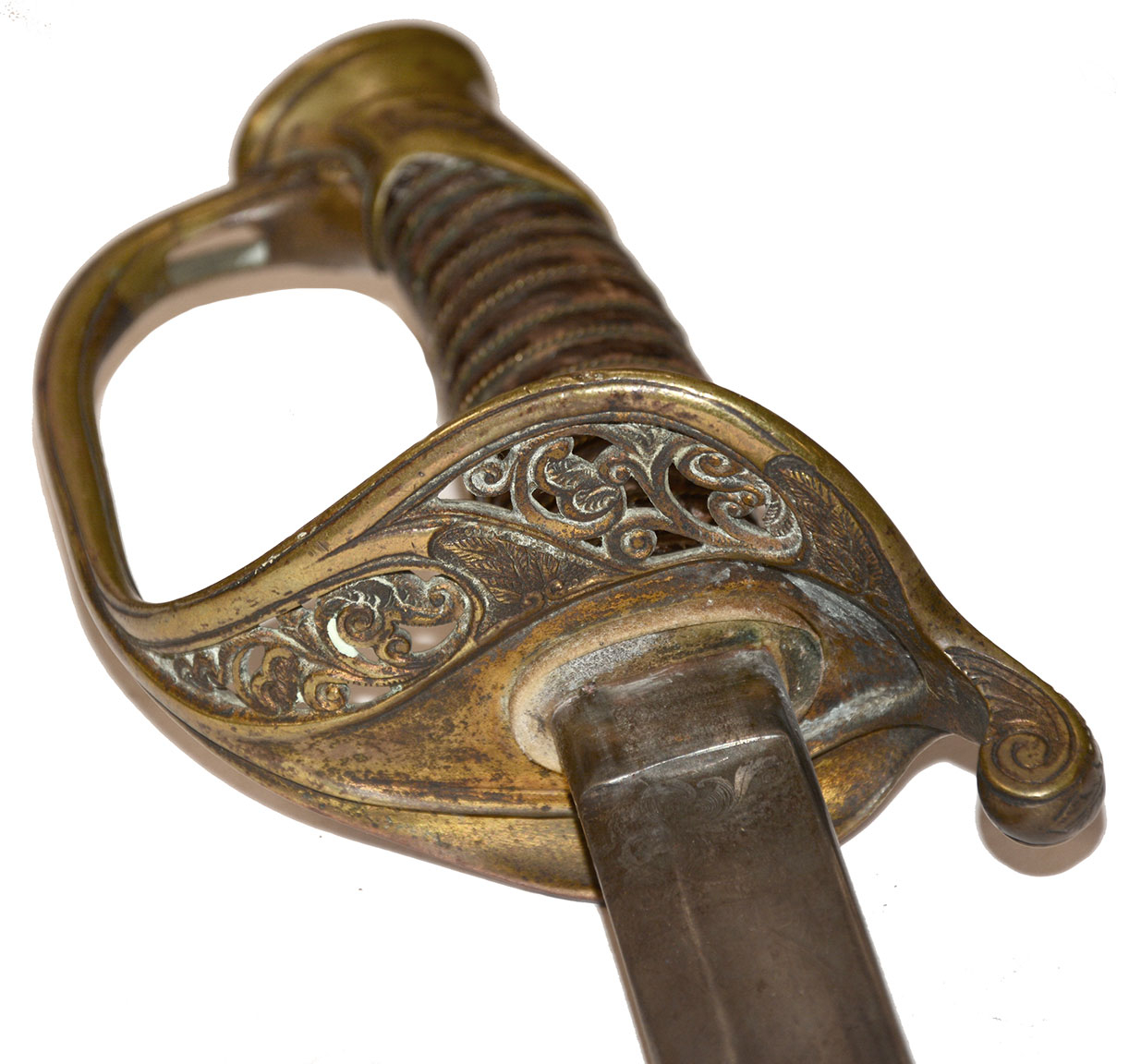
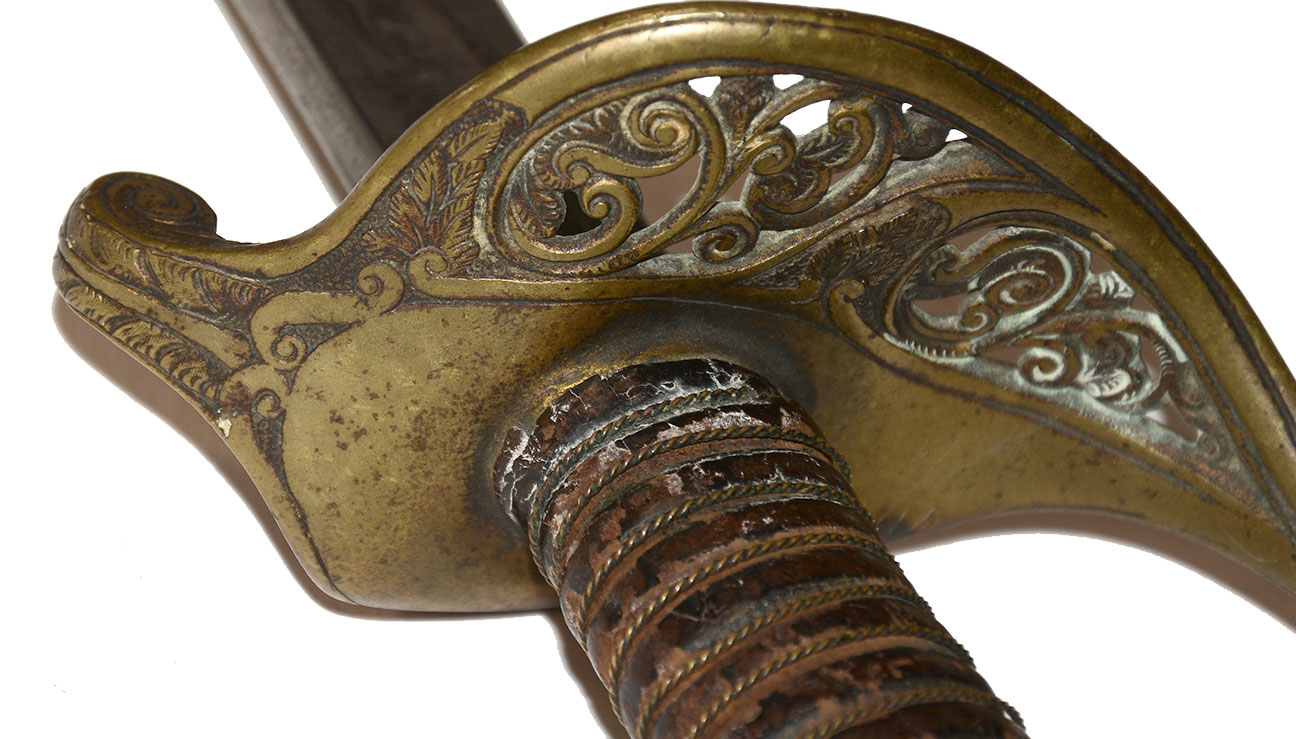
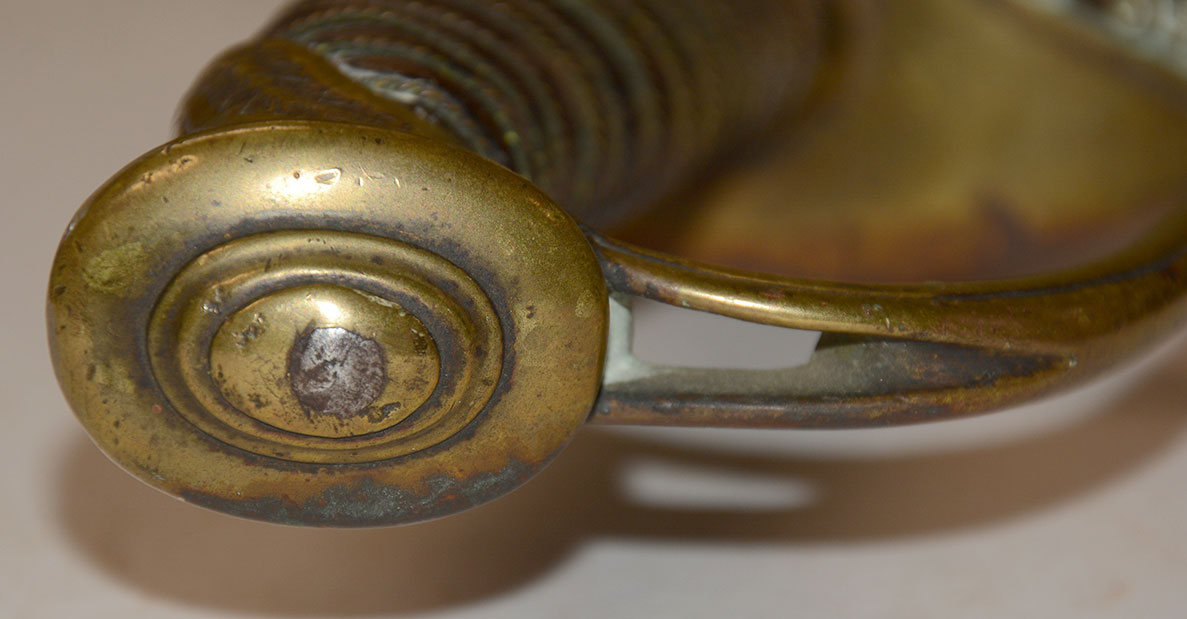


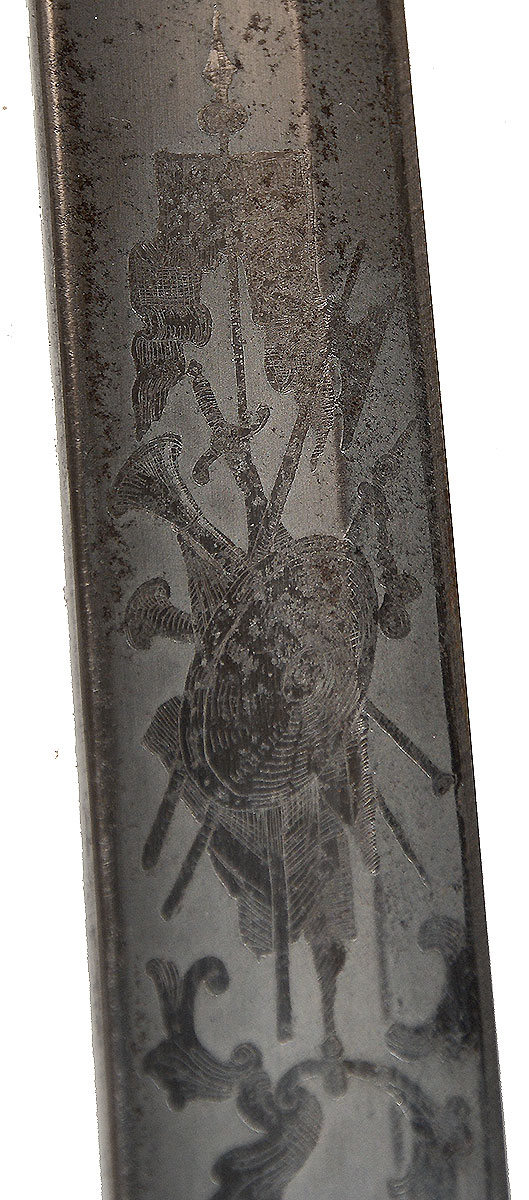

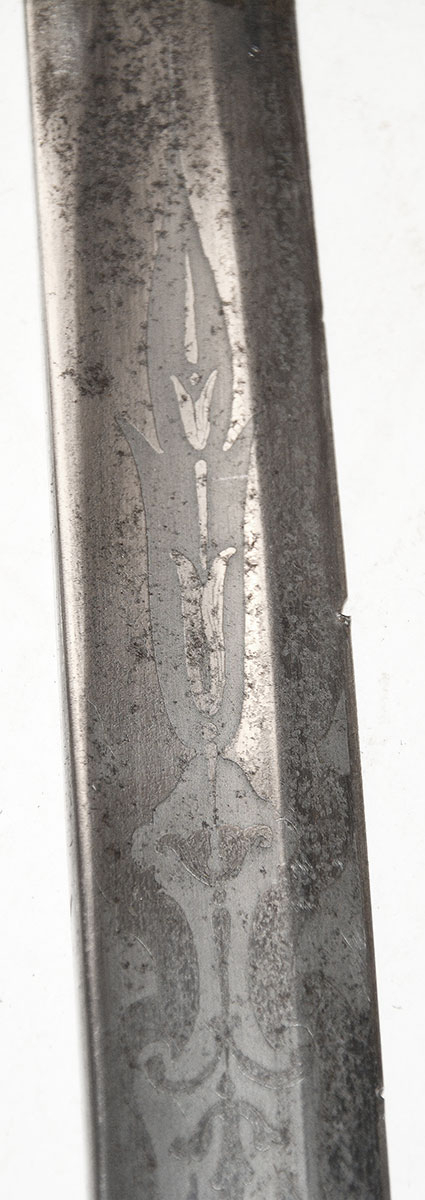
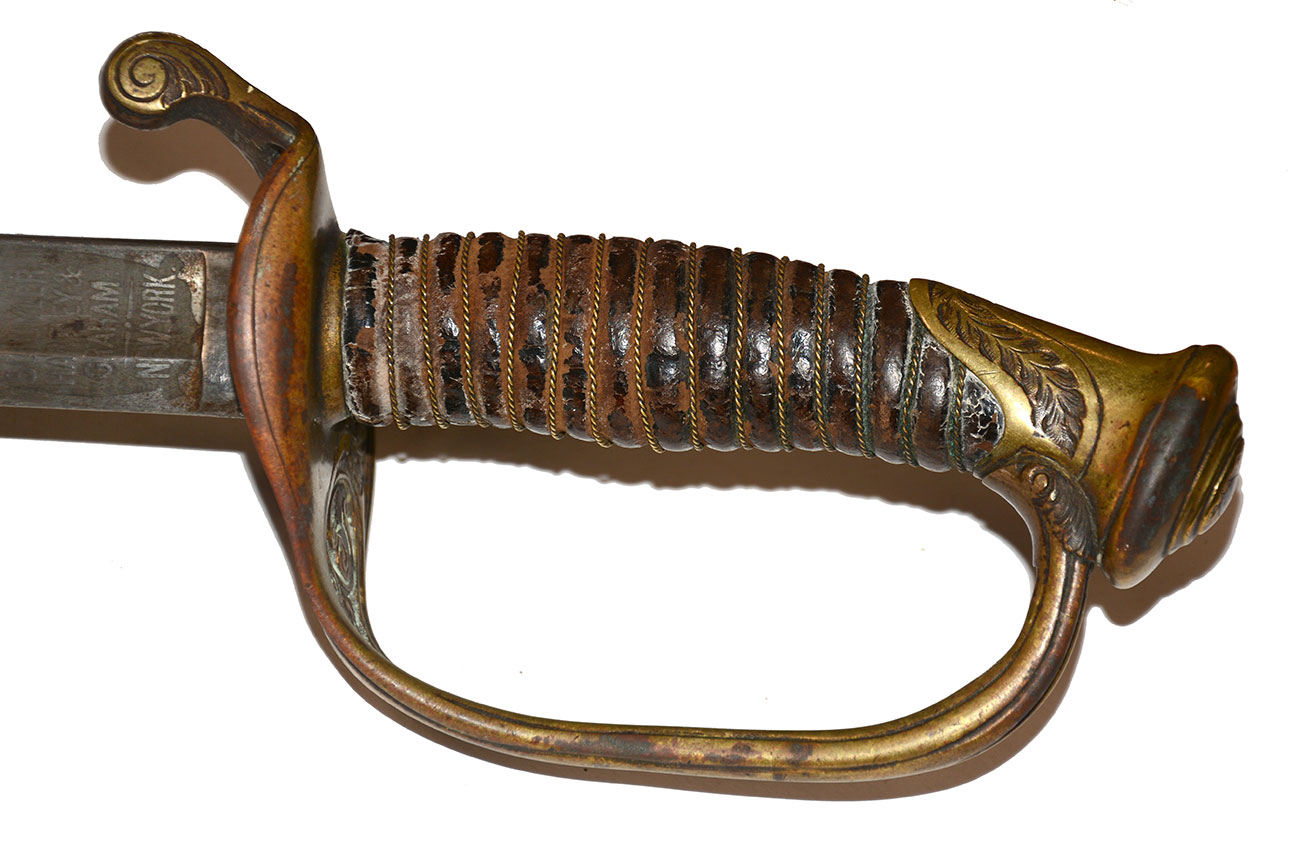
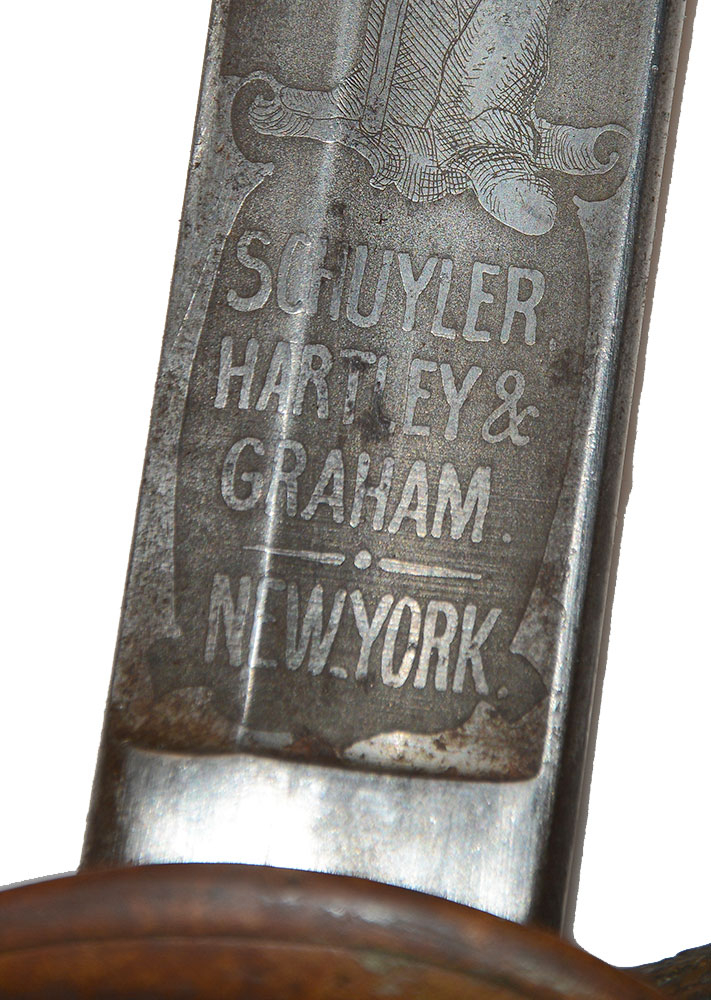
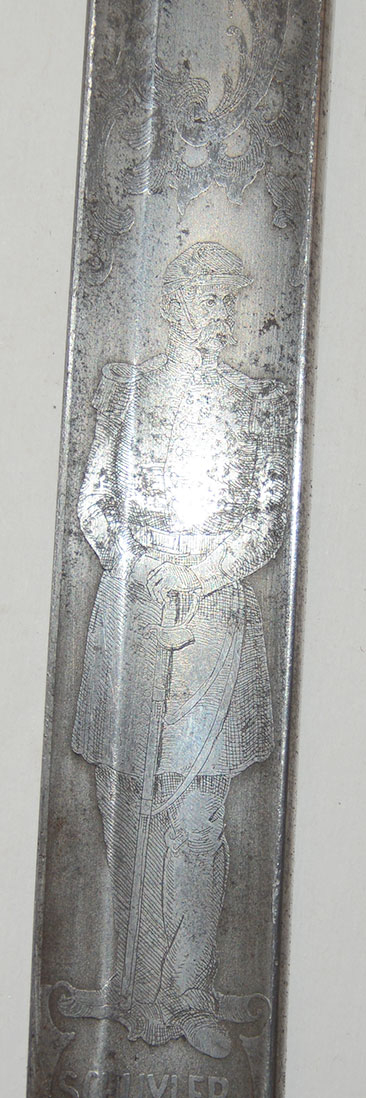


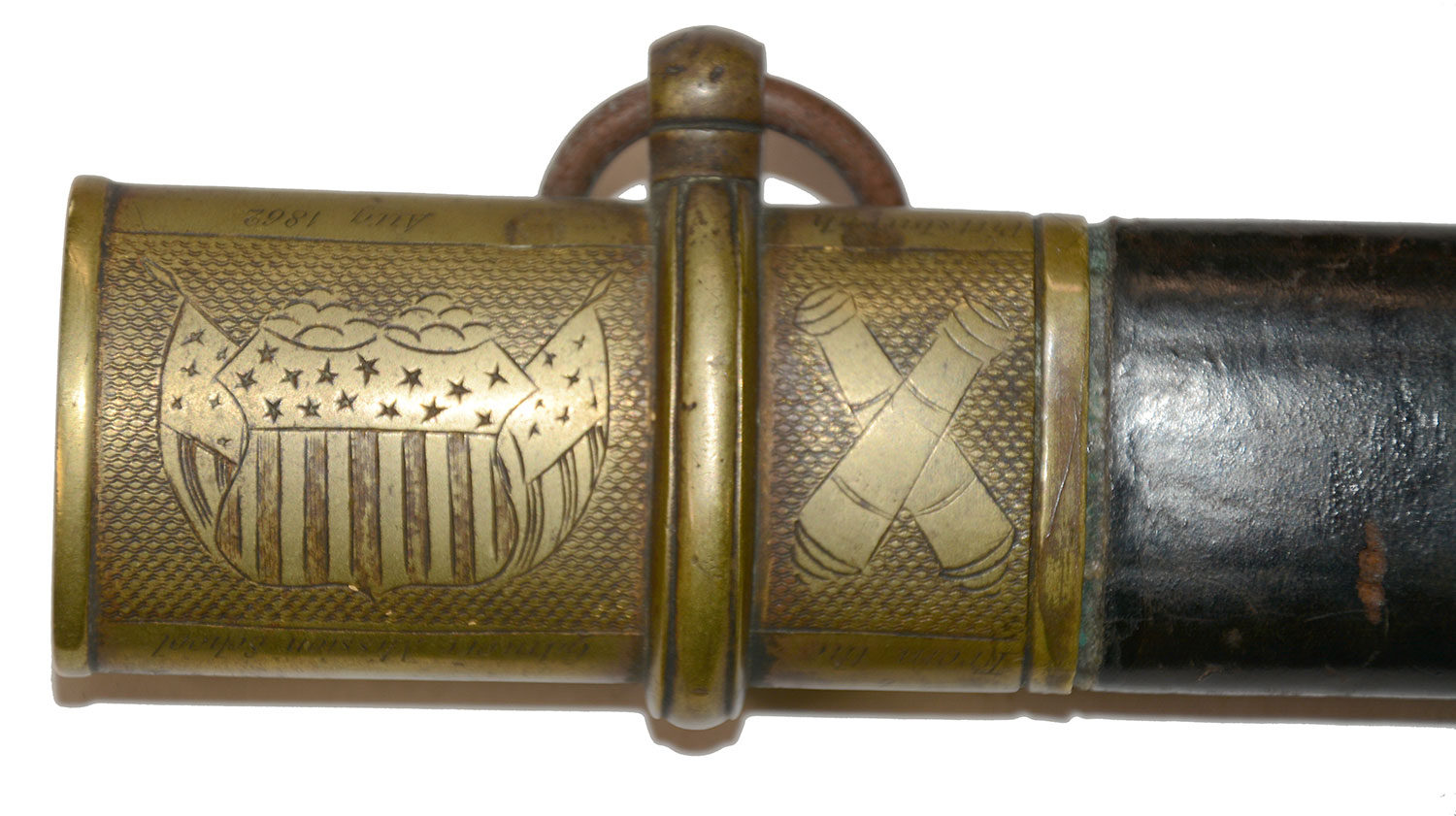
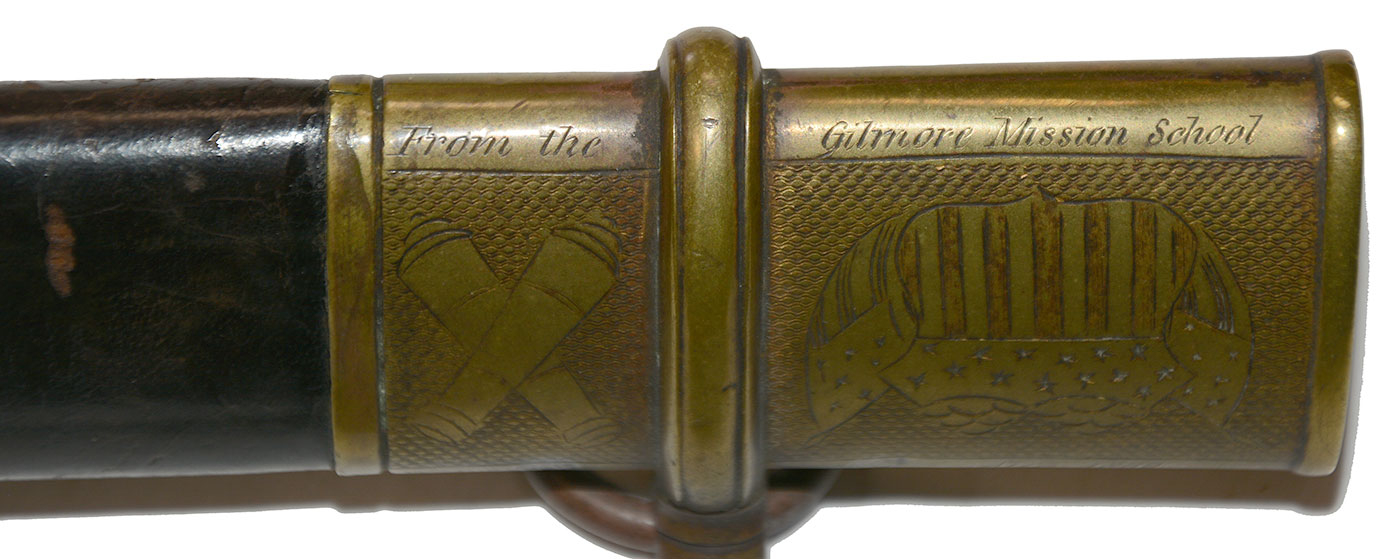
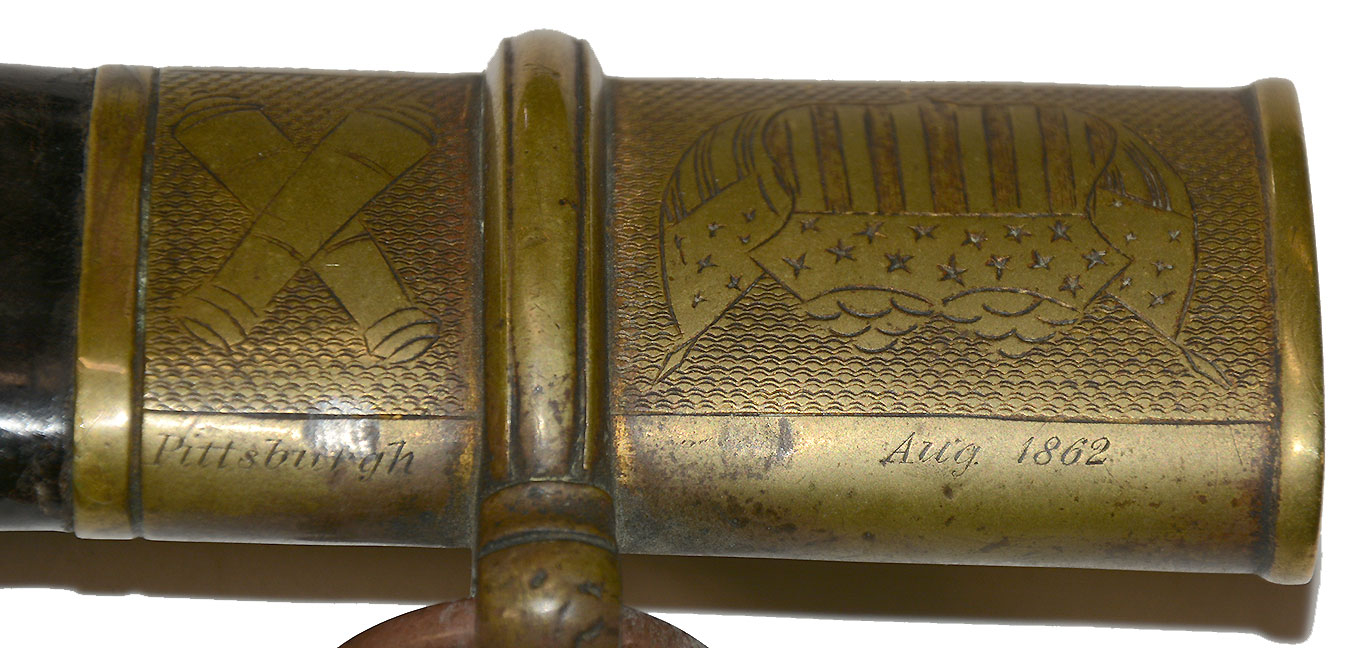
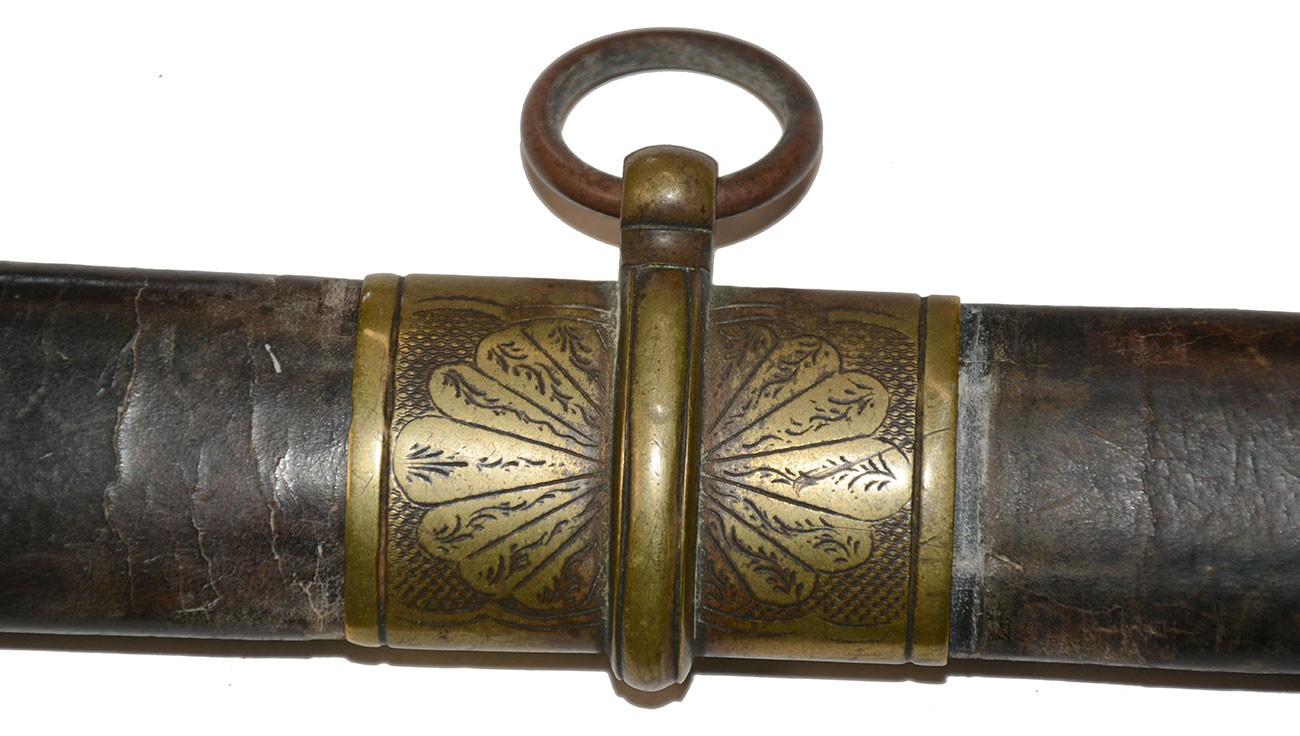

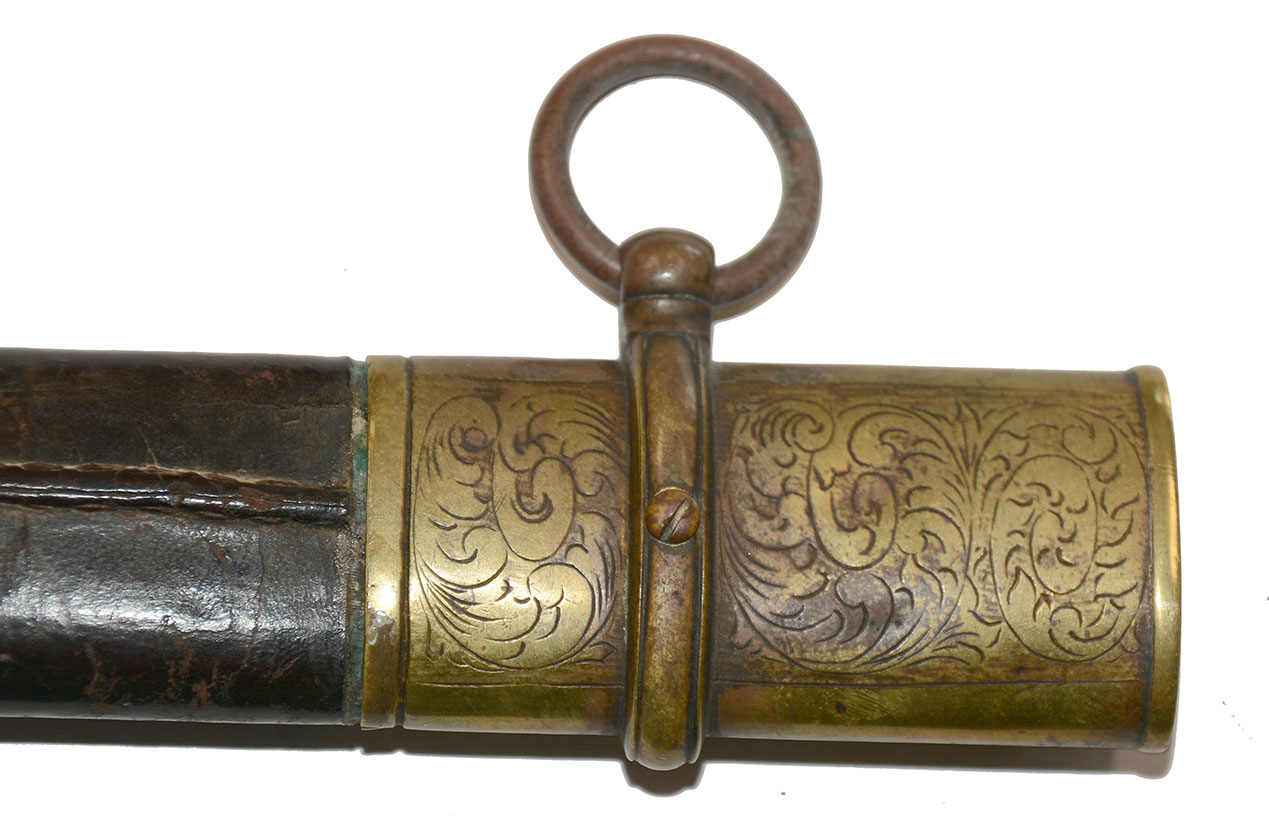
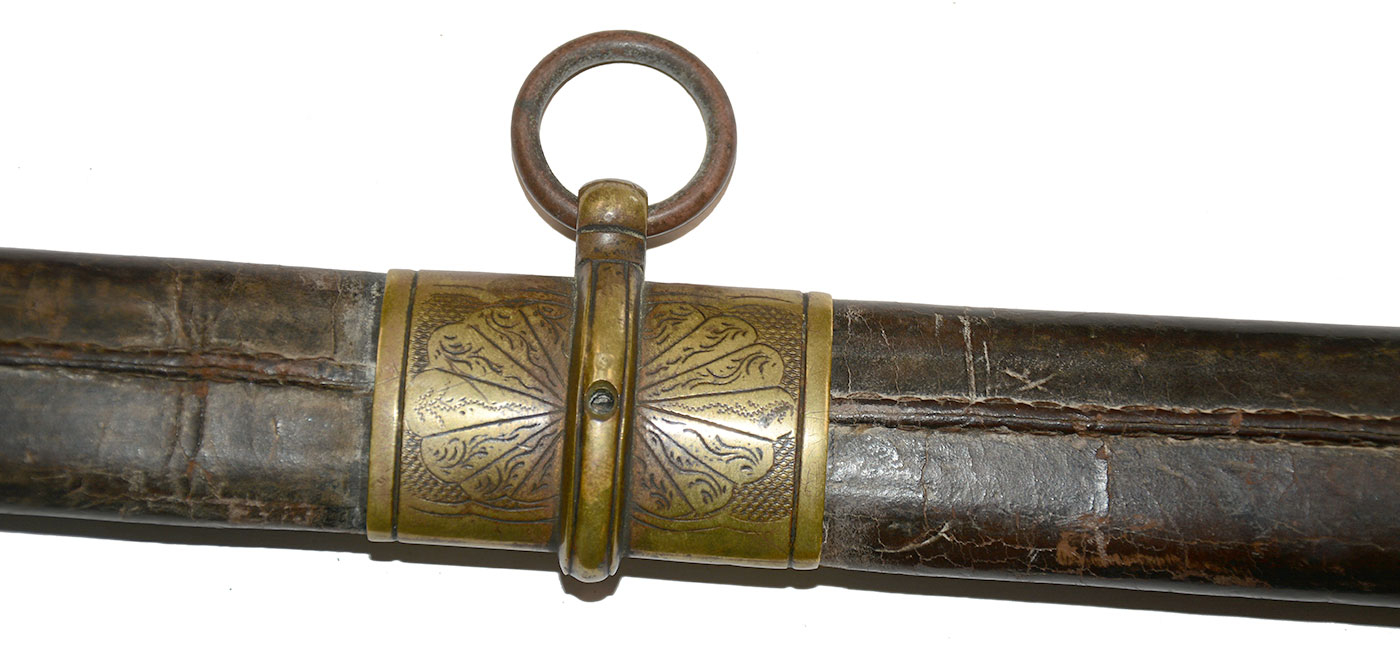


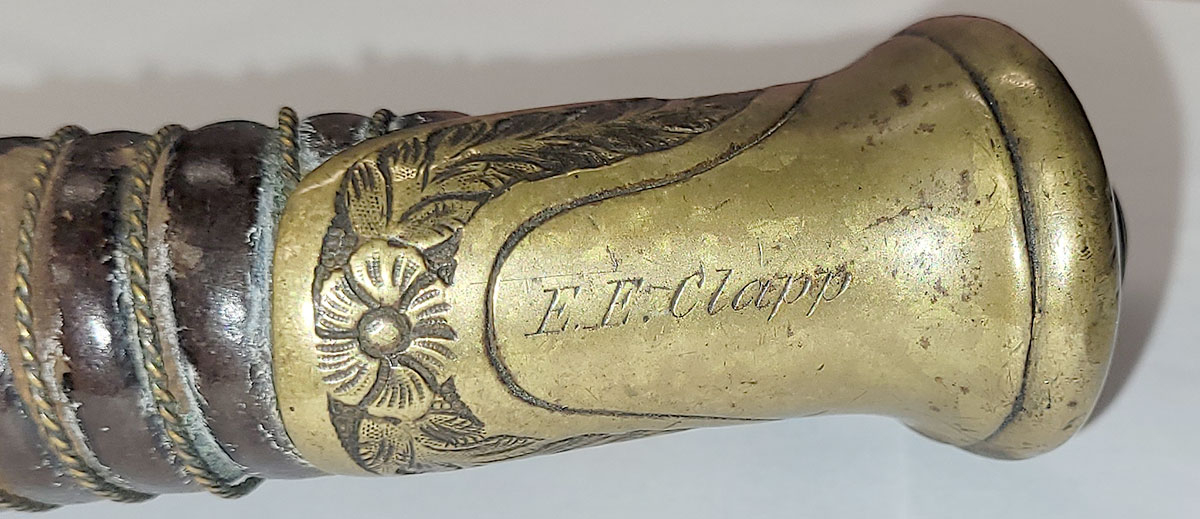
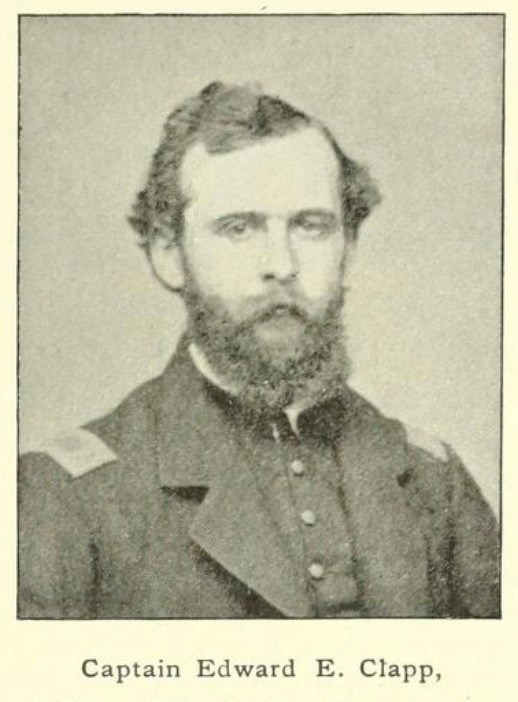
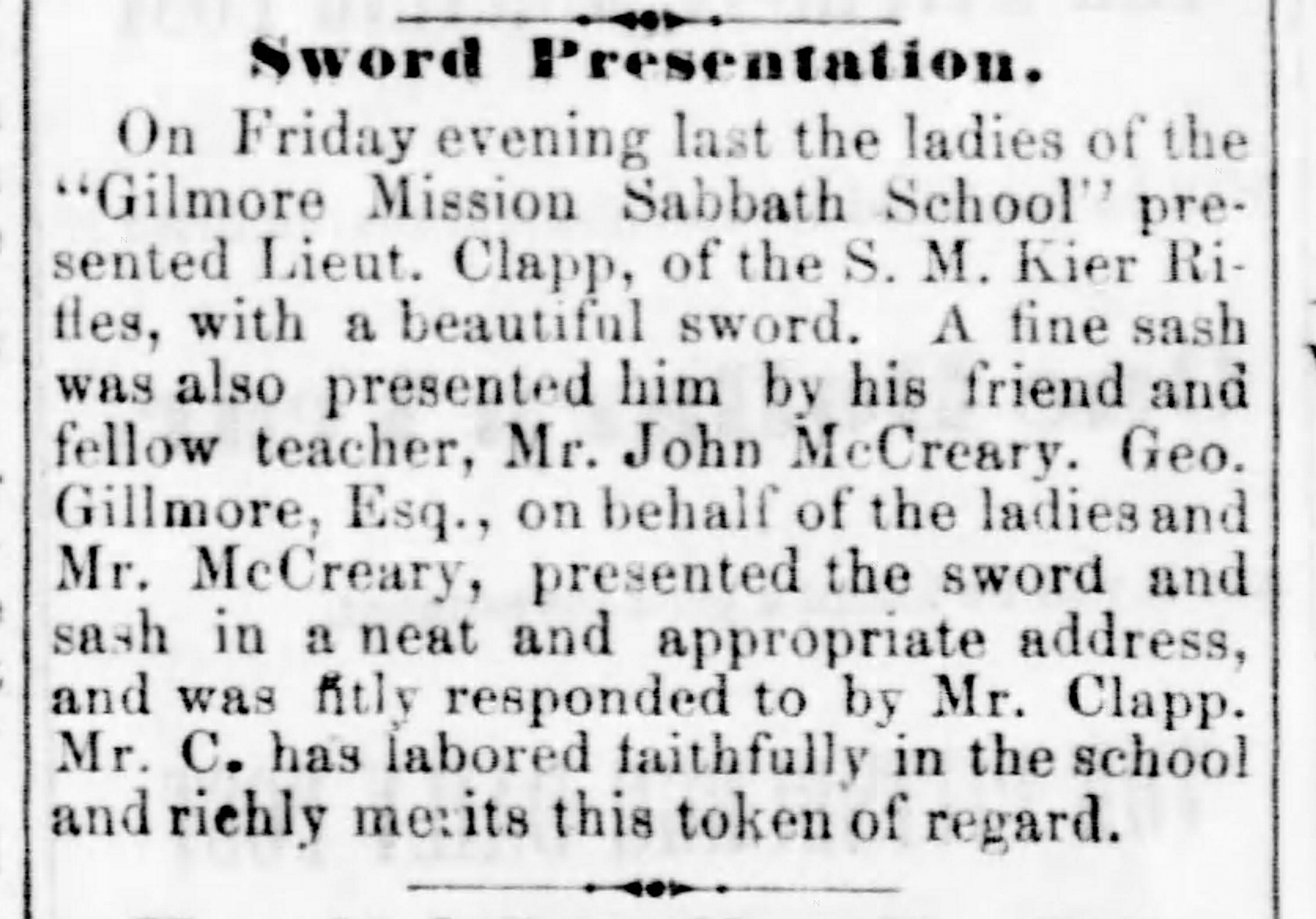
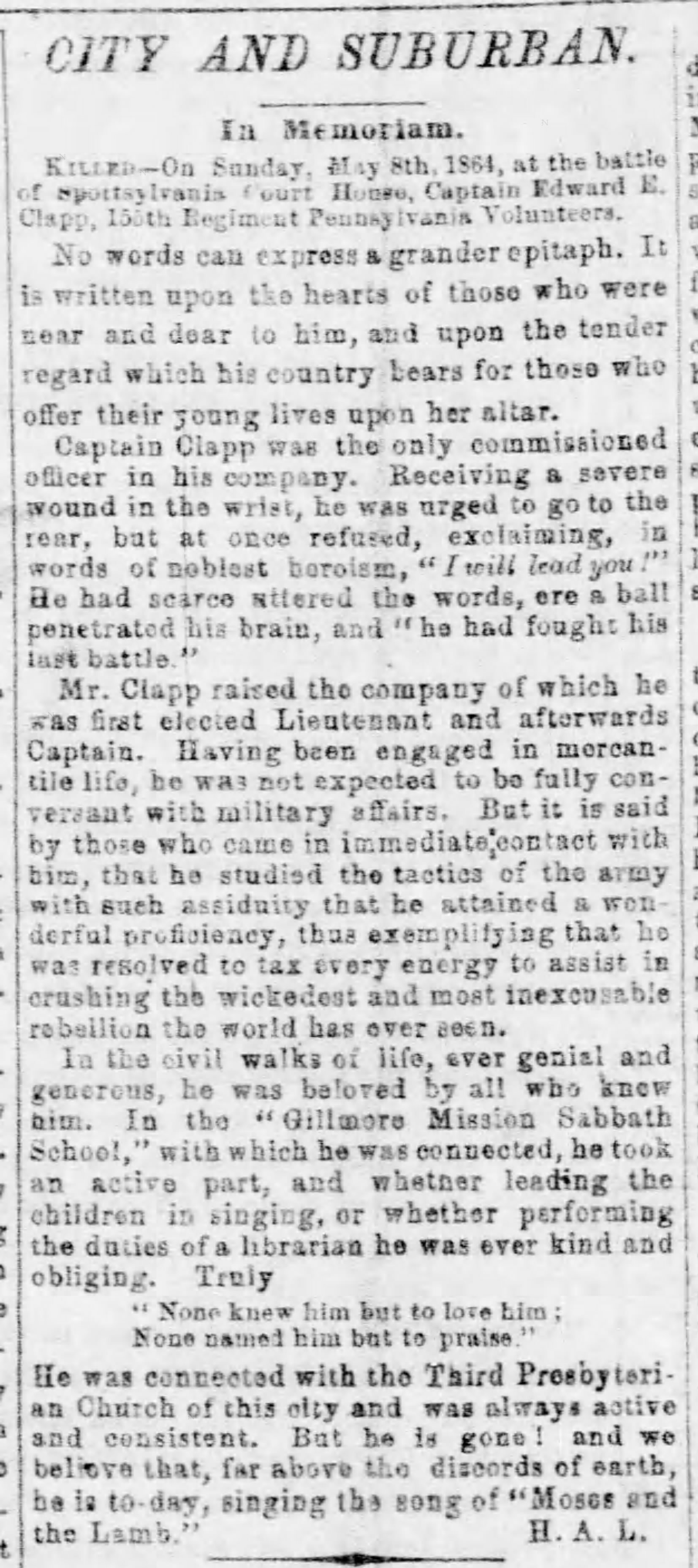
$9,500.00
Quantity Available: 1
Item Code:
Shipping: Determined by Method & Location of buyer
To Order:
Call 717-334-0347,
Fax 717-334-5016, or E-mail
This Schuyler, Hartley and Graham M1850 foot officer’s sword was presented to Lt. Edward Everett Clapp on the evening of August 29, 1862, five days before his company left Pittsburgh with seven others from Allegheny County to rendezvous at Harrisburg with two from Clarion County, who would together form the 155th Pennsylvania, a hard-fighting 5th Corps regiment, who were also uniformed as zouaves in time for the 1864 campaign. Clapp would be wounded at Fredericksburg, command the company at Gettysburg, and be killed in action at Laurel Hill, Spottsylvania, on May 8, 1864, after refusing to leave the field from an initial wound, and with a leave of absence in his pocket to visit his fiancée, an opportunity he also turned down when he found out the regiment was going into action in Grant’s Overland Campaign.
The sword is engraved in period script on the pommel, “E.E. Clapp” and on the upper scabbard mount, “From the Gilmore Mission School / Pittsburgh Aug. 1862.” The presentation was recorded in the Pittsburgh Post and Pittsburgh Gazette of Sept. 2: “Sword Presentation. On Friday evening last the ladies of the "Gilmore Mission Sabbath School" presented Lieut. Clapp, of the S. M. Kier Rifles, with a beautiful sword. A fine sash was also presented him by his friend and fellow teacher, Mr. John McCreary. Geo. Gilmore, Esq., on behalf of the ladies and Mr. McCreary, presented the sword and sash in a neat and appropriate address, and was fitly responded to by Mr. Clapp. Mr. C. has labored faithfully in the school and richly merits this token of regard.”
The sword is the regulation pattern with brass mounted leather scabbard, assembled or marketed by the well-known military goods dealers Schuyler, Hartley & Graham, and is in very good condition, showing an undisturbed, matching aged tone to the brass hilt and embellished scabbard mounts; minor, expected, wear to the grip and leather scabbard body; and with the blade showing only scattered gray age spots, a good point, two small and two tiny nicks to the edge, with the etched motifs fully visible and legible with just slight softening of the frosting and some slight shading on lower obverse. The sword is very attractive and shows just enough wear and use to make clear Clapp carried it in the field and did not relegate it to his baggage.
The hilt has an undisturbed, mellow aged patina. The pommel and guard are the standard configuration with brimmed pommel cap and foliate motifs in the band around the lower edge of the pommel, in the cast and chased openwork guard, and also in relief in panels on the inside and outside of the guard branches near the counterguard and on the quillon face. The grip is wrapped in leather rather than sharkskin, certainly black originally, now oxidized to brown, showing some wear and loss of finish in places from handling in legitimate field use and with the wire binding in place, but a bit loose. The guard shows some thin, light green verdigris in recesses, as does the pommel cap, along with some darker age spots. The quillon finial is cast and chased with a simple feathered scroll and has a slight bend forward. The leather sealing pad is in place on the underside of the guard.
The blade is impressively etched with two tall, standing military figures at the base on either side, with foliate and martial motifs above, featuring a trophy of arms at on the obverse and a bold “US” in contoured letters on the reverse. There is some minor rubbing and scattered age spots, but the etching is visible and legible on a muted silver, frosted ground, with the obverse showing a slight darkening toward the guard and some dark gray spots near the tip, well above the etched panels. The obverse shows a tall, standing soldier wearing a kepi and holding a bayoneted rifle upright with his left hand, with rifle butt on the ground, while resting his right elbow on a tall US shield behind him. Above this is a panel of foliate scrolls leads to a free-floating trophy of arms (shield, trumpet, halberd, banner, etc.,) ending with a slightly curving, leafy vine, whose leaves are echoed in the frosting of the panel that terminates in an extended, straight, leaf or flamelike spearpoint, somewhat abstract, geometric, or with an arabesque aspect to it. The reverse is boldly etched at the base of the fuller above the ricasso, “SCHUYLER, / HARTLEY & / GRAHAM. / NEW.YORK.” Above this a mustachioed officer wearing epaulets and forage cap with chinstrap down stands full length at parade rest, resting his hands on his saber. Above him somewhat abstract foliate scrolls extend upward to frame on the lower side of a “U.S.” in contoured letters, with a leafy vine extending up from that as on the obverse with frosted ground terminating in the same flame-like spear point.
The scabbard mounts match the hilt in tone and are embellished on both sides with military, patriotic, and foliate motifs. On the obverse of the upper mount the presentation inscription is placed along the upper and lower edges, on either side of the ring band, bordering a US shield superimposed on two US flags on a stippled ground above the ring band and a pair of crossed cannon barrels on the section below it. The middle mount shows shows a somewhat foliate fan-shell, also on a stippled ground, extending to either side of the ring band, and the boot-shaped drag shows an impressive combination of three US shields positioned at the top, middle and bottom with a fan-shell extending down from a band below the upper shield toward two cross swallowtail flags above the central shield, and below that a US pennant billowing up from the bottom shield, all on a stippled ground. On the reverse the upper mount and drag bear foliate scrolls; the middle mount shows the same fan-shell as on the obverse. The leather is good, showing wear and use with oxidation of the finish toward brown, some wear spots and crackling, mostly on the lower third, with the reverse showing the most wear and crackling in the same area with a short length of open seam and a slight crease. The obverse of the drag shows a minor dent or two at the very tip; the reverse shows five or six scattered small ones. All these and the other rather minor wear are a good indicator of field carry and use. Please see our photos.
Clapp had acted as librarian for the Sunday School and led the children in singing, a pursuit perhaps reflected in his enrollment as a student in the “Boston Musical Convention and Philharmonic Institute” in 1853. He had been born in Malden, MA, Jan. 14, 1837 and is picked up there in the 1850 census living with his parents and three sisters. The Massachusetts 1855 census has the same details, but adds his employment as a clerk, apparently in a large paper store in Boston, for whom he worked for three years according to other sources. By 1860, however, he had moved to Pittsburgh, where he is again listed as a clerk.
Records have him mustering as 1st Lieutenant of Co. F of the 155th Pennsylvania on Aug. 22, which seems to be the date for the company as a whole, and a note in his file indicates his commission was actually dated Sept. 2. He had certainly enrolled and joined for duty, however, even before August 22 and, given that he became an officer in the company, had certainly played a part in recruiting it as part of two company unit called the Kier Rifles, named after a wealthy local sponsor and benefactor. The Allegheny County companies had rendezvoused at Camp Copeland, near Pittsburg, before moving on Sept. 3 to Harrisburg, where the regiment was officially organized, with Clapp’s company, formerly Co. A of the “Kier Rifles,” then formally designated as Company F of the 155th Pennsylvania. From Harrisburg the regiment moved to Washington, arriving a few days after Second Bull Run, and was assigned to the defenses of the capital, as part of the 2nd brigade, 3d division, 5th corps (the corps in which it would serve throughout the war.)
The regiment was present, but in reserve at Antietam, and was camped in the area for period thereafter, during which they suffered from a lack of supplies and a good deal of sickness. Clapp is listed as absent sick at Sharpsburg in November and, according to the regimental history, was also hospitalized at Frederick, where he met and eventually became engaged to one of the nurses. He was back in the ranks in December, however, when the regiment received a bloody introduction to combat on Dec. 13 at Fredericksburg, taking part in 5th Corps assaults on Marye’s Heights (as part of the 2nd brigade, 3rd division, 5th Corps, in Hooker’s Center Grand Division,) losing 68 in killed, wounded and missing, with Clapp among the wounded- “wounded, slightly” according to one government form that placed it in the thigh, with another placing it in the right hip, and the Pittsburgh Post Gazette listing it as a wound, “severe but not dangerous,” in the groin. He was admitted to Mount Pleasant U.S. Army General Hospital at Washington on December 18, and recovered sufficiently by February 23, 1863, to receive a furlough until March 25, during which he likely visited home and/or went courting in Frederick.
He is listed as again present in the company from March 1863 forward, and in command of the company as 1st Lieutenant from April 3 on. The regiment was present at Chancellorsville, not heavily engaged, but still losing 3 killed, 10 wounded and 1 missing. The other regiments in the brigade, being short-term, were discharged and the 155th was transferred to Stephen Weed’s 3rd brigade of the 2nd division. This was one of the brigades rushed to crest of Little Round Top on July 2 to hold that vital position in a critical moment at Gettysburg, with the regiment losing 6 killed and 13 wounded in the fighting that day and the next, with their brigade commander among the killed. Clapp’s name is also on the regiment’s plaque on the PA monument at Gettysburg as senior officer in the company. After the battle the regiment took part in the pursuit of Lee until the end of July, followed by duty on the line of the Rappahannock and Rapidan until October, then the Bristoe Campaign, the battle at Auburn, and then the advance back to the Rappahannock, including the fight at Rappahannock Station on Nov. 7.
Clapp was promoted to Captain of Company F in November, Nov. 13 by some records and Nov. 14 by others, the earlier date likely being his discharge as lieutenant to enable him to accept the promotion with his new rank effective the next day. He had been considered “acting captain” at that point in any case and continued to command the company in the Mine Run Campaign, November 26 to December 2, and during the regiment’s subsequent duty along the Orange and Alexandria Railroad until April 1864 and then led them into the Wilderness in early May at the beginning of Grant’s Overland Campaign.
The regiment had undergone some changes from Fall 1863 to Spring 1864. One was a series of new brigade and division official assignments reflecting reorganization and consolidation of understrength regiments in the army as a whole. The regiment thus becomes part of the 4th Brigade, 1st Division in March 1864 and the 1st Brigade, 1st Division, 5th Army Corps in April. Also, during the Winter of 1863-64 the regiment was drilled in French light infantry tactics, supposedly the inspiration of brigade commander Kenner Garrard, who had taken over after Weed’s death at Gettysburg and commanded it until December. He also apparently aspired to uniform the entire brigade as zouaves and in early January 1864 the regiment was issued zouave uniforms of “French blue” trimmed in yellow bringing them into line with three other zouave regiments in brigade, though by the time the army moved in May, their brigade contained not only zouave regiments, but regular army units as well, earning references to it as both the “zouave brigade” and the “regular brigade,” under the command of Gen. R.B. Ayres. Clapp’s only recorded absence during the period is a ten-day leave in January, perhaps giving him an opportunity to acquire an appropriate zouave style officer’s uniform and do some more courting in Frederick.
According to their OR reports for the Wilderness and Spottsylvania, the regiment crossed the Rapidan on the morning of May 4, marched 18 miles and was engaged for two hours on the afternoon of May 5 on the Road to Robinson’s Tavern, losing 8 killed, 37 wounded and 7 missing. It acted as support on May 6, and on May 7 lost one officer wounded in the early morning hours while advancing as skirmishers, before falling back at daylight. That night, which would be Clapp’s last, they left their position at 10:00 p.m., “marching all night in the direction of Spotsylvania Court-House, halting at 8 a.m. on the 8th, forming line of battle; charging the enemy's position found them in too large force to push forward our column, and halted in a favorable position, and received orders to hold it, which we did. The loss in this engagement amounted to 6 killed, 38 wounded, and 3 missing.”
The object had been to gain the high ground at Laurel Hill near Spottsylvania Courthouse in the drive toward Richmond before Lee could block them, but Confederate troops arrived in time erect field works and repel the Union attacks. Clapp was one of two officers in the regiment killed in the fighting, according to one report, “within a few yards of the enemy's works." His Pittsburgh obituary states he had been first wounded in the hand, but being the only commissioned officer in the company refused to leave: “Receiving a severe wound in the wrist, he was urged to go to the rear, bat at once refused, exclaiming, in words of noblest heroism, ‘I will lead you!’ He had scarce uttered the words, ere a ball penetrated his brain. . .”
According to regimental history Clapp’s body was carried to the rear. The body of the second officer killed (Capt. Johnston, Co. A) is specifically said to have been carried to the rear and laid beside him and the two were eventually buried side by side. The regimental history also noted his death as “peculiarly pathetic, as on his person was a twenty days' leave of absence, which had been issued a few days before the campaign opened and which he declined to avail himself of in the presence of the enemy. In the Antietam campaign Captain Clapp was taken ill and nursed in a hospital in the town of Frederick, where he met an estimable young lady in attendance on the sick. This acquaintance ripened into courtship and an engagement to marry, for which his leave of absence had been procured. He was buried on the battlefield and the grave duly marked, but years afterward his parents visited Virginia and removed his remains to the family burying ground in Massachusetts..
It seems then that his refusal to leave the line of battle when wounded was just one of several expressions of his devotion to duty and to his men.
Clapp’s online cemetery listing voices the possibility that his gravestone in Massachusetts is a cenotaph. The regimental history, however, is clear that his family eventually interred him back home. The identity of his fiancée remains unknown.
This is a very good looking sword, carried by an officer in a colorful unit with a good combat record, and with a both tragic and romantic history attached to it. [sr] [ph:L]
~~~~~~~~~~~~~~~~~~~~~~~~~~~~~~~~~~~
THIS ITEM, AS WITH ALL OTHER ITEMS AVAILABLE ON OUR WEB SITE,
MAY BE PURCHASED THROUGH OUR LAYAWAY PROGRAM.
CLICK HERE FOR OUR POLICIES AND TERMS.
THANK YOU!
Inquire About PRESENTATION INSCRIBED FOOT OFFICER’S SWORD AND SCABBARD OF LIEUTENANT AND CAPTAIN EDWARD EVERETT CLAPP, 155th PENNSYLVANIA: WIA FREDERICKSBURG, COMMANDED CO. F AT GETTYSBURG; KIA SPOTTSYLVANIA
Most Popular
Historical Firearms Stolen From The National Civil War Museum In Harrisburg, Pa »
Theft From Gravesite Of Gen. John Reynolds »
Selection Of Unframed Prints By Don Troiani »
Fine Condition Brass Infantry Bugle Insignia »
British Imported, Confederate Used Bayonet »
Scarce New Model 1865 Sharps Still In Percussion Near Factory New »
featured item
CLOSE TO REGULATION VIRGINIA CONFEDERATE CAPTAIN'S FROCK COAT
The coat is made of mid- gray wool, possibly imported from England. It has full-length skirts ending in the typical and desirable raw edge. The sleeves have an 8 1/2-inch billow at the elbow. The dark blue wool standing collar is 1-1/2 inches high… (1268-060). Learn More »


